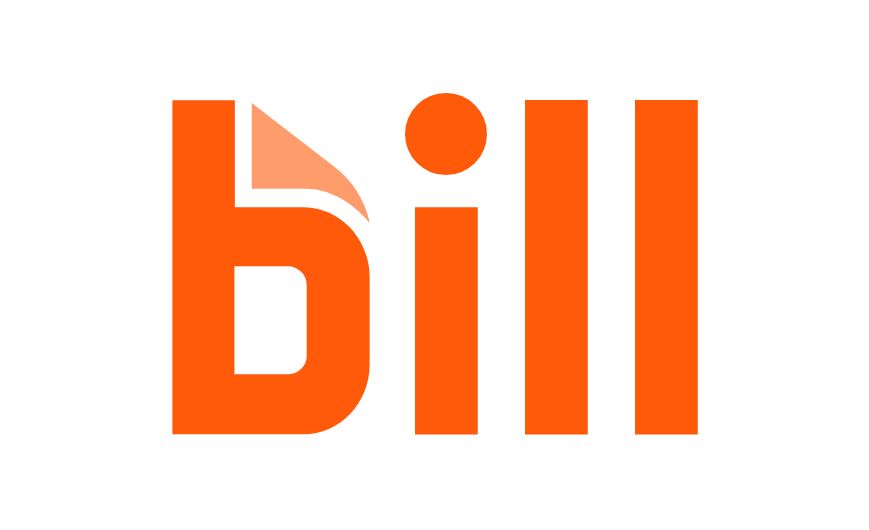As dentists in most countries grapple with soaring inflation, some potential buyers and sellers of dental clinics may have paused to rethink their options. Dental Tribune International spoke with Kyle Francis, president and founder of Professional Transition Strategies, about how inflation is reshaping the practice transition landscape. According to Francis, rising interest rates in 2023 could increase private equity interest in dentistry and have a downward impact on the values of US dental practices that generate US$1 million in annual revenue.
Mr Francis, could you please tell us about the ways in which inflation rates generally have an impact on the buying and selling of dental clinics?
It seems logical that there should be an inverse relationship between inflation rates and the value of a dental practice to an individual buyer; however, the extraordinarily low-rate environment that we have experienced over the last ten years has never really increased practice values for individual buyers beyond post-2009 recession levels. The main reason for this is that, if a practice has a strong cash flow, the bank’s aversion to provider risk is the only factor limiting the value of that business. For example, a practice that was generating US$1 million in revenue in 2007 would have received 80% of that revenue as a valuation metric—giving it a total value of US$800,000. That same practice might have been generating something like US$1.7 million in revenue by 2022, but the valuation methodology of 80% would still be the same.
The perceived value would have increased by the rate of inflation and the cash flow would have gone up congruently, if revenues and expenses both went up by the inflation rate. This means that the net result for the dentist may not be very much different now from what it was over ten years ago.
How do particularly high inflation rates change the practice acquisition landscape?
Timing is the main consideration when we are talking about how inflation rates change the acquisition landscape. For dentists, some of the first items on which inflation has an impact are clinical supplies and laboratory costs. Typically, this will be followed by an increase in staff costs, aimed at helping employees to meet the rising cost for everyday items.
As fee-for-service providers, it is easier for dentists to increase patient fees as they undergo these changes. On the flip side, it is challenging for in-network providers to do the same thing because they are beholden to how much an insurance contract is willing to pay for a procedure and are not allowed to adjust prices at will.
The good news is that these revenues will eventually catch up to the new cost structure as the market dynamics sort themselves out. If providers are losing too much money by providing care to a specific group under a certain insurance plan, that group will likely lose providers and the reimbursement will go up to account for those losses.
If a high inflation rate is sustained, it can take longer for revenues to catch up. But there are already many insurance plans increasing fees in a variety of US states to account for the lost net income to the provider. Specifically, in terms of an acquisition, if the practice is experiencing higher costs and the revenue has not yet caught up, then the practice may show unusually low profit margins, which can affect the value of the practice by knocking it down until the catch-up occurs.
“When there is uncertainty in the market, it can be an excellent time to consider opportunistic strategies that may be considered unusual.”
How might transactions differ in 2023, given these economic conditions?
Based on what we have seen, there has been very little variation in overall valuation methodologies from both groups and individuals.
We have hundreds of comparisons from 2022, when the inflation rates should have decreased profitability in the short term but did not. To date, our research shows only a very marginal decrease in both a seller’s discretionary earnings and earnings before interest, taxes, depreciation and amortisation. However, there is a possibility that, if rates stay high for quite some time, it may take longer for the revenue to catch up with the cost basis. In that event, we would expect that many practices would need to normalise for a year before wanting to go to market under higher cost circumstances. Also “earn-ups” could be used more often. This is where a practice may transact in its current state and, if the profitability improves over a certain time horizon, a higher price is paid out in the future. This gives the practice a chance to normalise.
What should owner-dentists who are planning to sell, or prospective buyers, be taking into account?
When there is uncertainty in the market, it can be an excellent time to consider opportunistic strategies that may be considered unusual. If we look back to past instances of market turbulence, the people and companies that succeeded during those times were those who thought outside the box.
For instance, buyers will note that people are currently worried about increasing interest rates, but they should keep in mind that these rates are essentially at the same level as they were during the boom period of the early to mid-2000s. Practices transacted at a very rapid rate during that time, so we can assume that they will in this environment as well. However, many buyers are not working under these assumptions and are waiting for “things to sort themselves out”. Many sellers are willing to make a deal and some buyers are waiting, and that means that someone who is intending to buy can get a good deal and have more options than he or she might have had at other times.
In the case of a seller, it could be time to consider other options that are available. He or she could think about a different kind of buyer for his or her practice, like a dental support organisation, private equity or even a roll-up of many similar practices. Sellers could also think about bringing in a partner, if they have a practice that could support this. Finally, in certain cases, even an employee stock ownership plan could make sense. Taking a step back in order to understand what these options could mean will allow buyers to gain some certainty in their approach.
Lastly, do you expect that there will be any variation in these trends in the near or medium term?
If there is anything we have learned from the 2008 recession and the COVID-19 lockdowns, it is that dentistry is highly resilient. I do not think that this will change in the medium or long term.
Having said that, the value of some dental practices has diminished over the last three years. If a practice is small and does not generate much profit, it will be hard to get a loan based on the assets. Most banks would prefer to lend to a start-up based on its assets, rather than to the owner of a low-profit practice. Also, if a practice is located in an area with a declining population, there is no doubt that it will take much longer to find the right buyer.
In these cases, I would expect that inflation rates and economic conditions will continue to increase the gap between these types of practices and what the rest of the market is experiencing, coupled with the compound effect of these headwinds.
Tags:
Dental market consolidation in the US is triggering high demand for clinics and some owners are taking advantage of equity arbitrage in order to make sales ...
LOS ANGELES, U.S.: When dental clinics in the U.S. were forced to close temporarily in early 2020, some heard what they thought was the final death knell of...
I am delighted to have been asked by Dental Tribune International to share my observations and thoughts about where we are heading over the next few years ...
CHICAGO, US: The annual inflation rate for dental services has dipped well below the rate of overall inflation in the US. This key development reverses a ...
COLORADO SPRINGS, Colo., U.S.: For dentists who own the property on which their dental practice is located, the property is typically their second-most ...
Live webinar
Tue. 23 April 2024
1:00 pm EST (New York)
Live webinar
Wed. 24 April 2024
8:00 am EST (New York)
Dr. Yin Ci Lee BDS (PIDC), MFDS RCS, DClinDent Prosthodontics, Dr. Ghida Lawand BDS, MSc, Dr. Oon Take Yeoh, Dr. Edward Chaoho Chien DDS, DScD
Live webinar
Wed. 24 April 2024
1:00 pm EST (New York)
Live webinar
Fri. 26 April 2024
12:00 pm EST (New York)
Live webinar
Mon. 29 April 2024
12:30 pm EST (New York)
Prof. Roland Frankenberger Univ.-Prof. Dr. med. dent.
Live webinar
Tue. 30 April 2024
1:00 pm EST (New York)
Live webinar
Tue. 7 May 2024
8:00 pm EST (New York)



 Austria / Österreich
Austria / Österreich
 Bosnia and Herzegovina / Босна и Херцеговина
Bosnia and Herzegovina / Босна и Херцеговина
 Bulgaria / България
Bulgaria / България
 Croatia / Hrvatska
Croatia / Hrvatska
 Czech Republic & Slovakia / Česká republika & Slovensko
Czech Republic & Slovakia / Česká republika & Slovensko
 France / France
France / France
 Germany / Deutschland
Germany / Deutschland
 Greece / ΕΛΛΑΔΑ
Greece / ΕΛΛΑΔΑ
 Italy / Italia
Italy / Italia
 Netherlands / Nederland
Netherlands / Nederland
 Nordic / Nordic
Nordic / Nordic
 Poland / Polska
Poland / Polska
 Portugal / Portugal
Portugal / Portugal
 Romania & Moldova / România & Moldova
Romania & Moldova / România & Moldova
 Slovenia / Slovenija
Slovenia / Slovenija
 Serbia & Montenegro / Србија и Црна Гора
Serbia & Montenegro / Србија и Црна Гора
 Spain / España
Spain / España
 Switzerland / Schweiz
Switzerland / Schweiz
 Turkey / Türkiye
Turkey / Türkiye
 UK & Ireland / UK & Ireland
UK & Ireland / UK & Ireland
 Brazil / Brasil
Brazil / Brasil
 Canada / Canada
Canada / Canada
 Latin America / Latinoamérica
Latin America / Latinoamérica
 USA / USA
USA / USA
 China / 中国
China / 中国
 India / भारत गणराज्य
India / भारत गणराज्य
 Japan / 日本
Japan / 日本
 Pakistan / Pākistān
Pakistan / Pākistān
 Vietnam / Việt Nam
Vietnam / Việt Nam
 ASEAN / ASEAN
ASEAN / ASEAN
 Israel / מְדִינַת יִשְׂרָאֵל
Israel / מְדִינַת יִשְׂרָאֵל
 Algeria, Morocco & Tunisia / الجزائر والمغرب وتونس
Algeria, Morocco & Tunisia / الجزائر والمغرب وتونس
 Middle East / Middle East
Middle East / Middle East
:sharpen(level=0):output(format=jpeg)/up/dt/2024/04/EvoDent-showcases-latest-dental-solutions-at-Krakdent-2024.jpg)
:sharpen(level=0):output(format=jpeg)/up/dt/2024/04/Osstem-Implant-lends-a-hand.jpg)
:sharpen(level=0):output(format=jpeg)/up/dt/2024/04/Study-links-e-cigarette-use-with-increased-risk-of-heart-failure.jpg)
:sharpen(level=0):output(format=jpeg)/up/dt/2024/04/Clearcorrect-launches-new-digital-solutions-globally.jpg)
:sharpen(level=0):output(format=jpeg)/up/dt/2024/04/High-quality-digitalisation-for-automation-precision-and-customer-satisfaction-Fig.-1.jpg)











:sharpen(level=0):output(format=png)/up/dt/2024/01/ClearCorrect_Logo_Grey_01-2024.png)
:sharpen(level=0):output(format=png)/up/dt/2014/02/Planmeca.png)
:sharpen(level=0):output(format=png)/up/dt/2014/02/3shape.png)
:sharpen(level=0):output(format=png)/up/dt/2013/04/Dentsply-Sirona.png)
:sharpen(level=0):output(format=png)/up/dt/2022/10/DMP-logo-2020_end.png)
:sharpen(level=0):output(format=png)/up/dt/2022/01/Sprintray_Logo_2506x700.png)
:sharpen(level=0):output(format=jpeg)/up/dt/2023/02/How-high-inflation-is-affecting-the-buying-and-selling-of-dental-clinics.jpg)

:sharpen(level=0):output(format=jpeg)/up/dt/2024/04/EvoDent-showcases-latest-dental-solutions-at-Krakdent-2024.jpg)
:sharpen(level=0):output(format=jpeg)/up/dt/2022/03/DSCF6298DTI-300x300.jpg)
:sharpen(level=0):output(format=jpeg)/up/dt/2022/06/Selling-up-for-millions-equity-arbitrage-is-increasing-the-wealth-of-US-dentists-but-not-for-long_1.jpg)
:sharpen(level=0):output(format=jpeg)/up/dt/2022/06/Selling-up-for-millions-equity-arbitrage-is-increasing-the-wealth-of-US-dentists-but-not-for-long_3.jpg)
:sharpen(level=0):output(format=jpeg)/up/dt/2021/11/Has-the-pandemic-really-strengthened-DSOs-on-the-US-dental-market.jpg)
:sharpen(level=0):output(format=jpeg)/up/dt/2022/12/Evolving-your-business-systems-into-2023-and-beyond%E2%80%94Part-1-Finances.jpg)
:sharpen(level=0):output(format=jpeg)/up/dt/2022/10/Lagging-inflation-rate-for-US-dental-services-squeezing-clinic-profits-and-dentist-incomes-.jpg)
:sharpen(level=0):output(format=jpeg)/up/dt/2021/07/Thinking-of-joining-a-DSO.jpg)






:sharpen(level=0):output(format=jpeg)/up/dt/2024/04/EvoDent-showcases-latest-dental-solutions-at-Krakdent-2024.jpg)
:sharpen(level=0):output(format=jpeg)/up/dt/2024/04/Osstem-Implant-lends-a-hand.jpg)
:sharpen(level=0):output(format=jpeg)/up/dt/2024/04/Study-links-e-cigarette-use-with-increased-risk-of-heart-failure.jpg)
:sharpen(level=0):output(format=jpeg)/wp-content/themes/dt/images/3dprinting-banner.jpg)
:sharpen(level=0):output(format=jpeg)/wp-content/themes/dt/images/aligners-banner.jpg)
:sharpen(level=0):output(format=jpeg)/wp-content/themes/dt/images/covid-banner.jpg)
:sharpen(level=0):output(format=jpeg)/wp-content/themes/dt/images/roots-banner-2024.jpg)
To post a reply please login or register